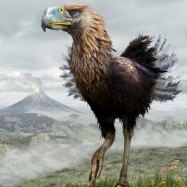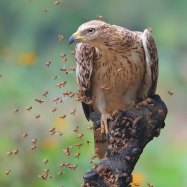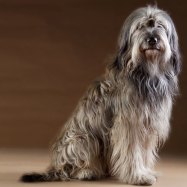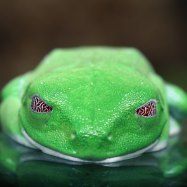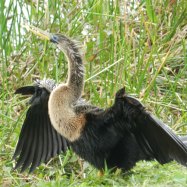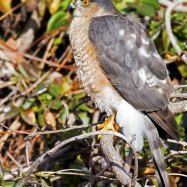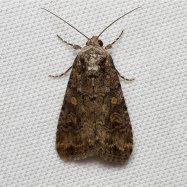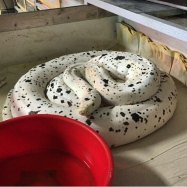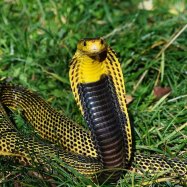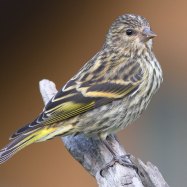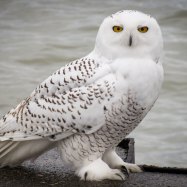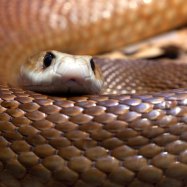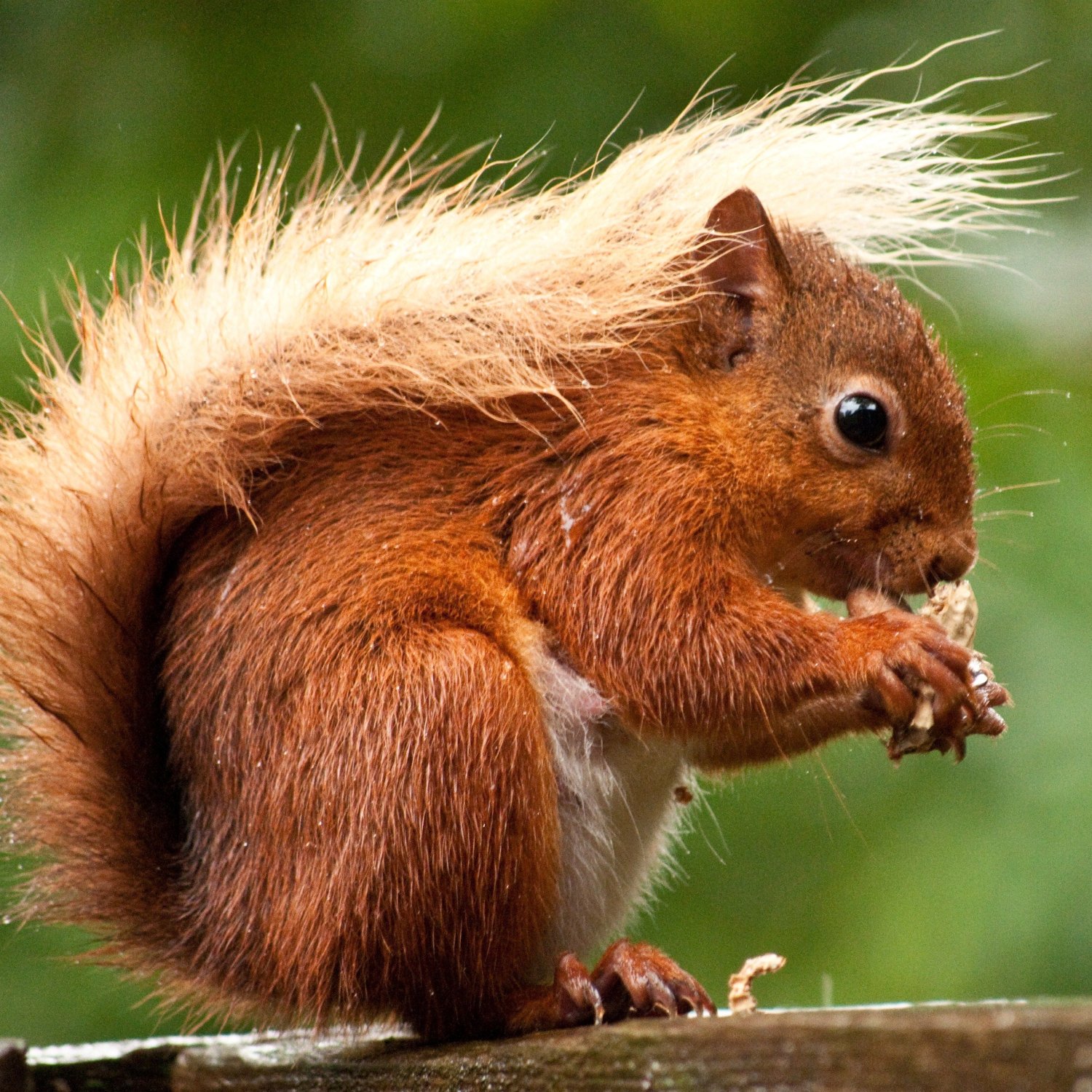
Red Squirrel
19 to 23 cm
Meet the red squirrel, a small and slender animal with a length of 19 to 23 cm. Found in the United Kingdom, they belong to the Sciuridae family. These adorable creatures are known for their bushy red tails and can be seen darting through trees in search of nuts and seeds. Keep an eye out for this charming member of the UK's wildlife family! #red squirrel #UKwildlife #cuteanimals
Animal Details Summary:
Common Name: Red Squirrel
Kingdom: Animalia
Habitat: Woodlands and forests
The Enchanting Red Squirrel: A Small Wonder of Eurasia
The forests and woodlands of Eurasia are filled with diverse and fascinating creatures. But among them, one little creature stands out with its vibrant red fur and playful demeanor – the Red Squirrel. Known scientifically as Sciurus vulgaris, these adorable creatures are not only a delight to the eyes but also have many fascinating traits that make them truly unique.From their physical appearance to their behavior and habitat, there is so much to learn and admire about these small wonders Red Squirrel. So, let's dive deep into the world of the Red Squirrel and discover why they are an integral part of the animal kingdom.
A Family of Squirrels
The Red Squirrel belongs to the Sciuridae family, which includes over 280 species of squirrels. These small rodents can be found in various habitats, from urban parks to dense forests. However, the Red Squirrel is primarily known to inhabit the woodlands and forests of Eurasia. They are native to the United Kingdom and can be found in almost all parts of the country.Despite their name, not all Red Squirrels are red in color. In fact, their fur color can vary from shades of red, brown, to even black. However, the most common coloration is a vibrant orange-red on the upper body and a creamy white on the belly.
A Unique Body Shape
Red Squirrels have a small and slender body, measuring only 19 to 23 cm in length, making them the smallest squirrel species in Eurasia Rainbow Shark. But don't let their size fool you – they are agile and quick, able to easily navigate through the branches and trees in their habitat.One of the most distinctive features of the Red Squirrel is their long bushy tail, measuring up to 15 cm in length. This tail serves as a balancing tool while climbing and also provides warmth during colder months. They have sharp and curved claws that help them grip onto trees and branches, allowing them to move effortlessly while foraging for food.
A Herbivorous Diet
Red Squirrels are herbivores, which means they primarily feed on plant-based foods. Their diet consists of nuts, seeds, flowers, and fruits found in their habitat. However, they have also been known to occasionally feed on eggs, insects, and even small birds.During the summer, when food is plentiful, Red Squirrels collect and store food in their nests or underground burrows. These food caches come in handy during the colder months when food is scarce. Interestingly, these squirrels have an excellent memory and can remember where they have stored their food, even after several months.
A Playful and Sociable Species
Red Squirrels are highly sociable and live in colonies with other squirrels, including their family members. They are also very playful creatures, often seen chasing each other around and jumping from tree to tree. These charming antics make them a popular sight in the woodlands, delighting hikers and nature lovers.However, their playfulness also serves a significant purpose. Red Squirrels use it as a form of communication, especially during the mating season. They use various vocalizations and body movements to attract potential mates and establish dominance among other squirrels in their colony.
A Unique Habitat and Distribution
The Red Squirrel is a species endemic to Eurasia, with its origins in the United Kingdom. They are primarily found in the woodlands and forests of Europe, extending from the United Kingdom to Siberia. However, with the introduction of the North American Grey Squirrel in the 19th century, Red Squirrels have faced a decline in their population. The Grey Squirrels are larger, more aggressive, and carry a deadly virus that is harmful to the Red Squirrels, leading to their displacement.The United Kingdom is one of the few places where Red Squirrels can still be found in good numbers. In particular, Scotland's Highlands and Islands are known to have substantial populations of Red Squirrels, making it an ideal place for wildlife enthusiasts to spot these creatures in their natural habitat.
The Challenges Faced by Red Squirrels
While the Red Squirrel's population has faced a decline in recent years, efforts are being made to protect and conserve this species. The biggest threat to their existence is the competition and disease brought by the Grey Squirrels. However, habitat loss and fragmentation due to human activities also pose a significant challenge.Conservation organizations are working to raise awareness and promote the conservation of this species. In the United Kingdom, Red Squirrels are a protected species under the Wildlife and Countryside Act 1981, making it illegal to harm or disturb them.
The Importance of Red Squirrels
The Red Squirrel plays a crucial role in maintaining the balance of their ecosystem. As seed dispersers, they help in the regeneration of forests and woodlands by burying and storing nuts and seeds. They also act as prey to larger carnivorous animals, making them a key part of the food chain.Furthermore, Red Squirrels are an essential part of the cultural and historical heritage of the United Kingdom, with many local communities associating these animals with their identity. It is vital to protect and conserve this species to preserve the biodiversity and cultural significance of the country.
A Nature's Wonder to be Admired
The Red Squirrel is truly a marvel of nature, with its vibrant color, playful behavior, and unique characteristics. From their role in maintaining the ecosystem to their cultural significance, these little creatures hold a special place in the hearts of people all over the world.It is a delight to observe these animals in their natural habitat and learn more about them. So, the next time you're out for a hike in the woodlands of the United Kingdom, keep an eye out for the enchanting Red Squirrel, and be mesmerized by its beauty and charm.

Red Squirrel
Animal Details Red Squirrel - Scientific Name: Sciurus vulgaris
- Category: Animals R
- Scientific Name: Sciurus vulgaris
- Common Name: Red Squirrel
- Kingdom: Animalia
- Phylum: Chordata
- Class: Mammalia
- Order: Rodentia
- Family: Sciuridae
- Habitat: Woodlands and forests
- Feeding Method: Herbivorous
- Geographical Distribution: Eurasia
- Country of Origin: United Kingdom
- Location: United Kingdom
- Animal Coloration: Red fur with white belly
- Body Shape: Small, slender body
- Length: 19 to 23 cm
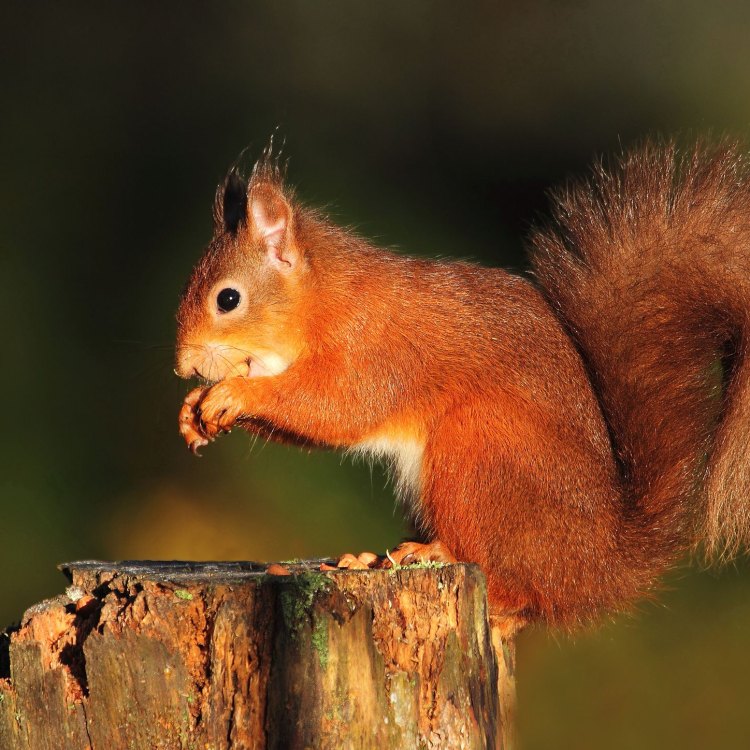
Red Squirrel
- Adult Size: Small
- Average Lifespan: 3 to 7 years
- Reproduction: Sexual
- Reproductive Behavior: Polygynandrous mating system
- Sound or Call: Chattering, barking, and trilling sounds
- Migration Pattern: Non-migratory
- Social Groups: Solitary, but can be found in loose groups
- Behavior: Active during the day (diurnal), arboreal
- Threats: Habitat loss, competition with invasive species, predation
- Conservation Status: Least Concern
- Impact on Ecosystem: Seed dispersal, tree regeneration
- Human Use: Hunted for fur, also kept as pets
- Distinctive Features: Tufted ears and bushy tail
- Interesting Facts: Red squirrels are excellent climbers and can leap up to 6 meters between trees.
- Predator: Birds of prey, foxes, weasels, and domestic cats
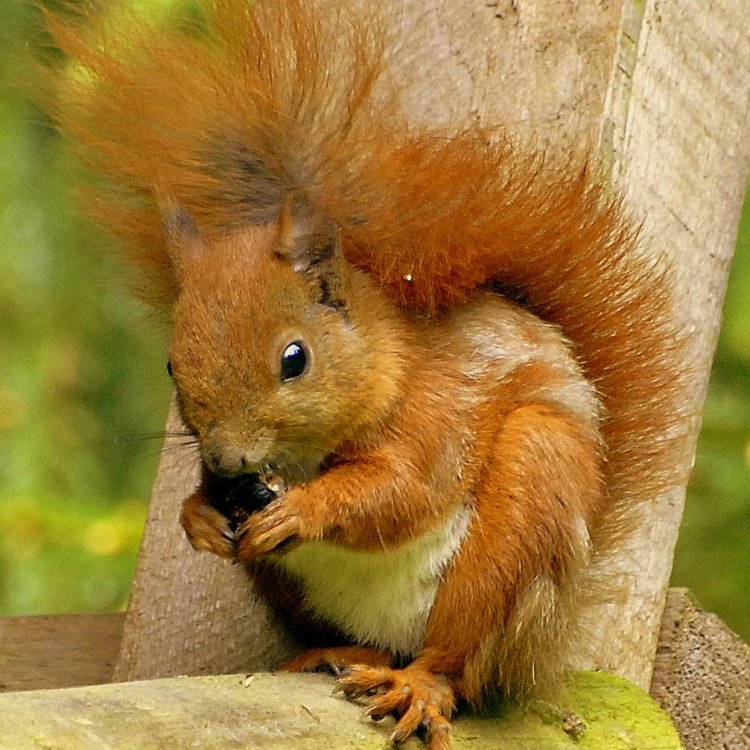
Sciurus vulgaris
The Charming Little Red Squirrel and its Fascinating Life
When you think of squirrels, you probably picture those cute, bushy-tailed creatures scurrying around parks and playing in trees. But did you know that there are over 200 species of squirrels in the world? One of the most unique and intriguing species is the red squirrel, also known as the Eurasian red squirrel or Sciurus vulgaris. These charming little creatures have captured the hearts of many with their vibrant reddish-brown fur and lively demeanor.Native to Europe and parts of Asia, the red squirrel is a small-sized mammal with an average length of 35 cm and weighing around 300 grams PeaceOfAnimals.Com. They have a slender body, tufted ears, and a distinctive bushy tail that helps them balance while climbing and jumping from tree to tree. But what really sets them apart is their beautiful reddish-brown coat, which gives them their name.
Red squirrels have an average lifespan of 3 to 7 years, although some have been known to live up to 10 years in captivity. And in their relatively short life, they have a lot going on, from reproduction to foraging and survival. Let's dive into the fascinating life of the red squirrel and discover what makes them truly unique.
Reproductive Behavior and Social Structure
Like most mammals, red squirrels reproduce sexually, with mating occurring between January and March. However, what makes them stand out is their polygynandrous mating system. This means that both males and females will have multiple sexual partners during the breeding season.The reproductive behavior of red squirrels is quite complex and varies depending on the environment and availability of resources Robin. During the breeding season, females release a strong scent to attract males, and the males will then fight for the right to mate with her. Once the female has chosen her mate, they will engage in a loud and energetic mating chase, which can be quite a sight to behold.
After mating, females will build a nest, usually in a tree hole or a leafy drey, to give birth to their offspring. The gestation period for red squirrels is around 38 days, and litters can range from 3 to 7 kits. Females are solely responsible for taking care of the young, and they will feed them, protect them, and teach them how to survive in the wild.
When it comes to social groups, red squirrels are primarily solitary and territorial animals. They prefer to live alone and only come together during the breeding season or when resources are scarce. However, they can also be found in loose groups, especially during the winter months when they gather to forage and share food sources.
Active and Arboreal Lifestyle
Red squirrels are diurnal animals, meaning they are most active during the day. They spend a significant amount of their time foraging for food, especially during the autumn months when they need to accumulate fat reserves for the coming winter.Their arboreal lifestyle is well-adapted to their surroundings, and they are excellent climbers, thanks to their sharp claws and strong hind legs. They can easily maneuver their way through trees, leaping up to 6 meters between branches with ease. They also have a keen sense of balance, allowing them to walk along narrow branches and even hang upside down to reach food.
Their diet mainly consists of a variety of nuts, seeds, fruits, and pine cones. They also feed on young shoots and buds, and during the winter months, they rely heavily on stored food and tree bark. Interestingly, red squirrels have a unique way of foraging for food. They bury seeds and nuts in the ground for later use, acting as nature's little gardeners by playing a vital role in seed dispersal and tree regeneration.
Threats and Conservation Status
As with many animal species, the red squirrel faces various threats to their survival, including habitat loss, competition with invasive species, and predation. One of the major reasons for their decline is the introduction of the North American grey squirrel, which carries a virus that is deadly to red squirrels. The grey squirrel is also bigger and more aggressive, making it difficult for the red squirrel to compete for resources.Due to these threats, the International Union for Conservation of Nature (IUCN) has listed red squirrels as "Least Concern" on the Red List of Threatened Species. However, they are protected by law in some areas, and conservation efforts are being made to preserve their populations.
Impact on Ecosystem and Human Use
Red squirrels play a significant role in maintaining a healthy ecosystem. As mentioned earlier, they are essential for seed dispersal, which leads to the regeneration of trees and helps maintain a balance in forest ecosystems. They also act as prey for various predators, such as birds of prey, foxes, weasels, and domestic cats, thus contributing to the food chain.Unfortunately, humans also have a significant impact on red squirrels. Historically, they were hunted for their fur, which was used to make a soft, warm material for clothing. However, this practice has significantly declined, and now red squirrels are mostly kept as pets in some parts of the world. It is essential to note that keeping wild animals as pets is not only illegal in many places but also detrimental to their health and well-being.
Interesting Facts
Red squirrels are full of surprises, and here are some interesting facts about them that will make you appreciate these little creatures even more:- Red squirrels are excellent swimmers and can cross large bodies of water by paddling with their hind legs and using their tails as a rudder.
- They are also known to make different sounds, including chattering, barking, and trilling, to communicate with one another.
- In some cultures, the red squirrel is seen as a symbol of curiosity, energy, and playfulness.
- Despite their small size, they are known for their resilience and can adapt to various environments with ease.
- And last but not least, the red squirrel's scientific name, Sciurus vulgaris, translates to "common squirrel," showing just how widespread and well-known this species is.
In conclusion, the red squirrel may be small in size, but it has a huge impact on its ecosystem and is a fascinating creature to observe. With their distinctive features, charming personalities, and impressive abilities, it's no wonder they have captured the hearts of many. Let's appreciate and protect these little creatures, ensuring that future generations can continue to marvel at their beauty and unique qualities.
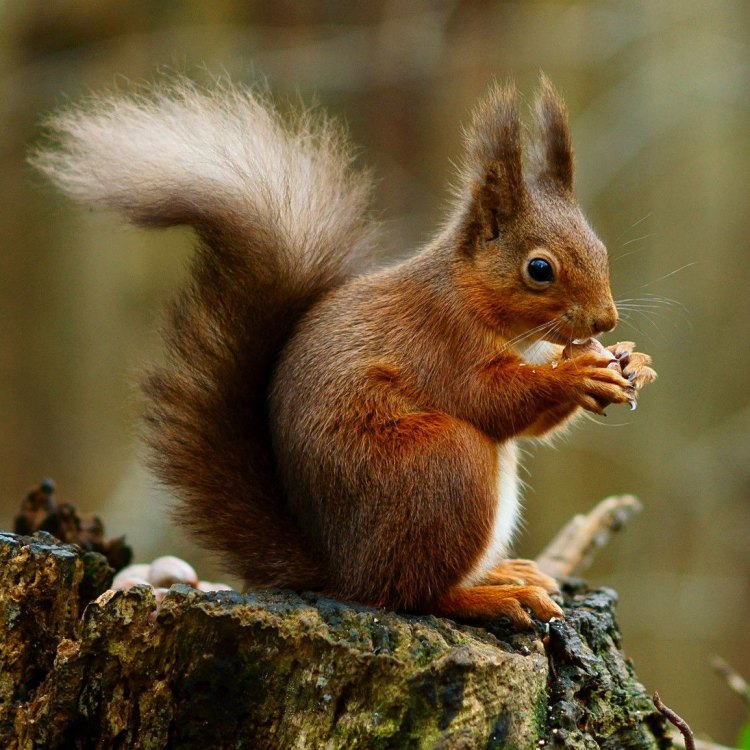
The Enchanting Red Squirrel: A Small Wonder of Eurasia
Disclaimer: The content provided is for informational purposes only. We cannot guarantee the accuracy of the information on this page 100%. All information provided here may change without prior notice.

